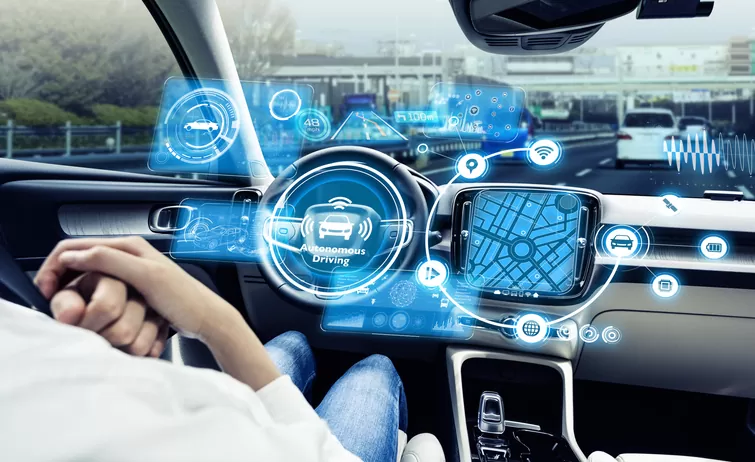The automobile industry has undergone monumental changes over the past century. From the invention of the first gasoline-powered vehicles to the rise of electric cars and autonomous vehicles, technological innovations continue to reshape the way we think about mobility. The future of automobiles is now increasingly defined by two key trends: electric vehicles (EVs) and autonomous vehicles (AVs). These innovations not only promise to make transportation more efficient, sustainable, and safer but also offer a glimpse into a new era of how we interact with cars, cities, and the environment.
In this article, we’ll explore the current and future trends in the electric and autonomous vehicle sectors, the technological innovations driving these changes, and what the future of mobility may look like.
1. The Rise of Electric Vehicles: A Shift Toward Sustainable Transportation
The Environmental Imperative
Electric vehicles (EVs) have been around for over a century, but they are now experiencing a significant resurgence. This shift can be largely attributed to growing concerns about the environmental impact of traditional gasoline-powered vehicles. In recent years, governments, automakers, and consumers have increasingly recognized the need to reduce greenhouse gas emissions, lower air pollution, and combat climate change.
The transition to electric vehicles is a key strategy in reducing the automotive industry’s environmental footprint. Unlike traditional vehicles that rely on internal combustion engines (ICE) powered by fossil fuels, electric vehicles are powered by electricity stored in batteries. When charged using renewable energy sources, EVs have the potential to be carbon-neutral, significantly lowering their environmental impact compared to gasoline-powered vehicles.
Technological Advancements in EVs
1. Battery Technology
A major breakthrough in the widespread adoption of electric vehicles is the development of more efficient and affordable battery technology. Lithium-ion batteries, the most commonly used type of battery in EVs today, have undergone significant improvements in terms of energy density, charging speed, and cost reduction. This has led to EVs with longer driving ranges, faster charging times, and lower purchase prices.
Several innovations are currently in progress to further improve battery technology:
- Solid-State Batteries: These batteries use a solid electrolyte instead of a liquid one, offering higher energy density, faster charging, and improved safety. Companies like Toyota and QuantumScape are leading the charge in developing solid-state batteries for mass production.
- Battery Recycling: As EV adoption increases, so too does the demand for raw materials. Recycling old batteries and reusing critical components such as lithium and cobalt will play an essential role in meeting demand while reducing environmental impact.
2. Charging Infrastructure
One of the primary challenges faced by EVs is the availability of reliable and widespread charging infrastructure. While charging stations have grown exponentially in number, particularly in urban areas, there is still a need for more infrastructure in suburban and rural regions. Additionally, charging times remain a limiting factor in EV adoption.
Superchargers and fast-charging technologies are advancing rapidly, allowing EVs to be charged in as little as 20 to 30 minutes. In addition, wireless charging is being tested as a potential game-changer that could make the charging process as seamless as possible, where the vehicle charges automatically while parked in a designated area.
3. Range and Affordability
Modern electric vehicles offer impressive ranges, with some models capable of driving 300 miles or more on a single charge. This compares favorably with the range of many gasoline-powered cars, which previously made EVs impractical for long trips. As manufacturers invest in larger, more efficient batteries, the range of EVs will continue to improve.
Affordability remains a challenge, but costs have been steadily decreasing as economies of scale take effect. Government incentives, tax rebates, and subsidies also make electric cars more attractive to consumers, encouraging mass adoption.
The Future of Electric Vehicles
As governments and manufacturers shift toward electrification, the future of electric vehicles will be characterized by increased variety and affordability. By 2030, it’s expected that EVs could make up 50-70% of all global car sales, thanks to growing environmental regulations, improvements in battery technology, and broader public acceptance. Major automakers like General Motors, Volkswagen, and Ford are already committing to transitioning their fleets to electric models within the next few decades.
In addition to passenger vehicles, EVs are expected to dominate other forms of transportation, such as electric trucks, vans, and public transportation. Major delivery companies like Amazon and UPS are already testing electric delivery trucks, reducing their carbon footprints in the process.
2. The Rise of Autonomous Vehicles: Shaping the Future of Mobility
What Are Autonomous Vehicles?
Autonomous vehicles (AVs), or self-driving cars, are vehicles capable of sensing their environment and operating without human input. Using a combination of sensors, cameras, machine learning, and advanced algorithms, AVs can navigate roads, avoid obstacles, and make decisions in real-time.
AVs are categorized based on their level of autonomy, with Level 0 being fully manual and Level 5 being fully autonomous. Most current autonomous vehicle technology falls under Level 2 or Level 3, where the vehicle can handle certain driving tasks, such as steering or acceleration, but a driver is still required to take control when necessary. Level 4 and Level 5 vehicles are expected to be fully autonomous, meaning they can operate without any human intervention in most conditions.
Technological Innovations Driving AVs
1. Sensors and Perception Systems
One of the primary technologies enabling autonomous driving is the sensor suite that allows the vehicle to “see” its environment. These sensors include:
- LIDAR (Light Detection and Ranging): A laser-based sensor that creates detailed 3D maps of the environment.
- Radar: Provides data on the speed and location of objects in a vehicle’s path.
- Cameras: Capture high-resolution images of the surroundings to detect pedestrians, traffic signs, and other important features.
These sensors, combined with powerful onboard computers, allow autonomous vehicles to accurately map their surroundings, detect objects, and respond to various driving situations.
2. Machine Learning and Artificial Intelligence
Autonomous vehicles rely heavily on machine learning and artificial intelligence (AI) to process the vast amounts of data collected by their sensors. AI algorithms can “learn” from the environment and improve decision-making over time. For instance, AVs can analyze thousands of different driving scenarios and make predictions about potential hazards, adjusting their speed or direction accordingly.
Additionally, AI is essential for enabling vehicles to communicate with other cars and infrastructure, such as traffic signals and road signs, through vehicle-to-everything (V2X) technology. This communication could lead to safer, more efficient driving and reduce traffic congestion.
3. Connectivity and Data Sharing
Connectivity will be central to the future of autonomous vehicles. Self-driving cars will not only need to communicate with each other but also with smart infrastructure such as traffic lights, road sensors, and other vehicles. The widespread adoption of 5G networks will make this real-time communication faster and more reliable, enabling vehicles to make split-second decisions based on up-to-date information.
The Future of Autonomous Vehicles
Autonomous vehicles promise to change the landscape of transportation in profound ways. Some of the key benefits include:
- Safety: Human error accounts for over 90% of all car accidents. AVs could potentially eliminate accidents caused by distraction, fatigue, or impaired driving.
- Mobility: AVs could provide greater independence for the elderly and disabled, who may have difficulty driving conventional vehicles.
- Efficiency: AVs could communicate with each other to optimize traffic flow, reduce congestion, and lower fuel consumption.
- Environmental Impact: The combination of AVs and electric power could reduce carbon emissions even further.
Although fully autonomous vehicles are not yet on the road in large numbers, Waymo, a subsidiary of Alphabet (Google’s parent company), has been testing autonomous taxis in select cities, and Tesla continues to develop and improve its Autopilot system. Legal, regulatory, and ethical challenges remain, but many experts predict that fully autonomous vehicles could be commonplace by the late 2020s or early 2030s.
3. The Convergence of Electric and Autonomous Vehicles
In the coming decades, the automobile industry is likely to see the convergence of electric vehicles and autonomous vehicles. Many of the major automakers and tech companies involved in autonomous vehicle development are also heavily invested in electric vehicles, as these two technologies complement each other.
- Cost Efficiency: Electric vehicles are ideal platforms for autonomous systems, as they have fewer moving parts than traditional gas-powered cars and can be more easily adapted for self-driving technology.
- Fleet Services: As ride-sharing and autonomous vehicles become more widespread, electric vehicles will play a key role in shared fleets, reducing overall costs and making sustainable transportation more accessible.
The future could see autonomous electric vehicles (AEVs) operating as fleets, providing shared rides that reduce traffic congestion and environmental impact. Companies like Waymo, Uber, and Tesla are already investing heavily in these future technologies.
Conclusion
The future of automobiles is filled with exciting possibilities. Electric vehicles offer a cleaner, more sustainable way to travel, while autonomous vehicles promise to make driving safer, more efficient, and more accessible. Together, these innovations represent a shift towards more environmentally friendly and tech-driven transportation solutions that could change the way we live and interact with the world around us.
As advancements in battery technology, self-driving algorithms, and infrastructure development continue to unfold, the next few decades will likely witness a dramatic transformation in the global transportation landscape. The future of automobiles promises to be both autonomous and electric, paving the way for smarter, safer, and more sustainable mobility.
Key Takeaways:
- Electric Vehicles (EVs) are the future of sustainable transportation, with advancements in battery technology and charging infrastructure making them more accessible.
- Autonomous Vehicles (AVs) are set to revolutionize mobility, improving safety, reducing traffic congestion, and increasing efficiency through AI, machine learning, and connectivity.
- The convergence of electric and autonomous vehicles will further enhance the sustainability and accessibility of transportation.
- The automobile industry is undergoing a profound transformation, driven by environmental concerns, technological innovation, and a shift toward shared mobility solutions.

